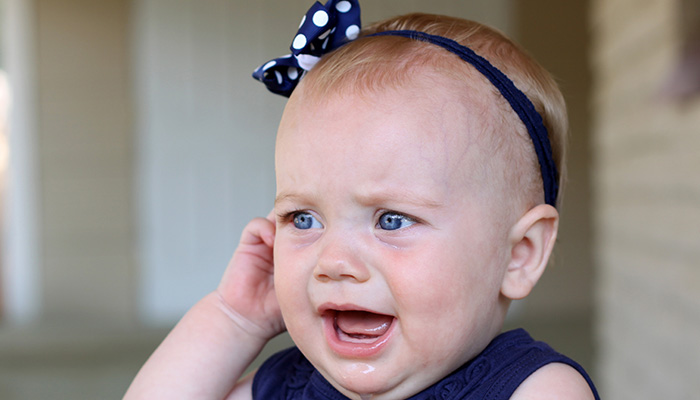More likely than not, you have sought medical care for your child for an ear infection. Ear infections are the most common reason in pediatrics for an office visit. It’s also the number one diagnosis for kids necessitating an antibiotic. What is an ear infection? How do kids get them? Is there anything you can do to help prevent infections? Hopefully this blog can answer those questions for you.
When we are talking about ear infections, we are referring to a bacterial infection in the middle ear space. The middle ear is the chamber behind your ear drum. The chamber connects to the back of your nose and throat through your eustacian tube (the tube that pops when you yawn on an airplane). This space it not typically connected to your ear canal. When we are examining your child, we are looking through the semi-transparent ear drum, into the middle ear space. An infection of the ear canal is “swimmer’s ear”. When talking about middle ear infections, there is nothing you are doing wrong to the outside of the ear or canal that is causing it (i.e. bathwater, swimming, etc are not causing the problem). The most common cause is a complication of a cold. When a child has a cold, it provides an environment where bacteria can work their way from the nose and throat into the middle ear space and cause an infection. Often, the infection begins when a child is several days into a cold. This happens the most in kids from 6 months to two-years-old. As they age, the strength and angle of the eustacian tube changes. They also gain more immunity to germs and have been vaccinated against a bacteria likely to cause ear infections. If your child does develop an ear infection, there are several symptoms you may notice. Some, but not all, kids will spike a new fever. They may become more irritable or start sleeping poorly. If the eardrum bursts, like a pimple popping (gross, I know, but you get the picture!) you may see drainage coming out of their ear canal.
There are several risk factors for ear infections. One is age which I discussed above. A family history can also lead to an increased risk. Kids that are in daycare tend to get more ear infections mainly because they are getting more frequent colds. Cigarette smoke exposure is also a risk factor for increased infections. Finally, kids that have different anatomy such as a cleft palate or changes in their facial structure due to Down syndrome are at an increased risk of ear infections.
Breastfeeding can be protective against ear infections. It decreases the kinds of bacteria found in the nose and throat and the angle at which a baby feeds promotes less back flow through the eustacian tubes than a bottle. Avoiding bottle propping decreases infections as well.
In children over two-years-old without severe infections, high fever, or worsening symptoms, it is ok to use the “SNAP” approach. SNAP stands for safety net antibiotic prescription. This category of kids often gets over their ear infection without any antibiotics. If their symptoms are worsening over the next couple of days, the family can fill the prescription sent in at their visit. The most important part, whether with or without antibiotics, is to treat their pain with acetaminophen or ibuprofen (if they are over six-months-old). Even with antibiotics, it takes a couple of days for a child to start feeling better. If SNAP is not an option, we send in antibiotics to start that day. When a child starts to develop multiple ear infections, we often refer to our ENT colleagues for pressure equalization tubes (PE tubes or “tubes”). Tubes are just that, tiny little tubes placed into the eardrum that provide an opening between the middle ear and the ear canal. Tubes change the pressure in the middle ear making it more difficult for an infection to set up shop. If the child does get an ear infection, rather than painful pressure on the eardrum, the pus is able to drain out of the tube. Usually the tubes fall out on their own and the ear drum heals up within 3 month to 3 years of being placed. Infrequently, they need to be removed or the eardrum needs to be repaired surgically.
Since we are well into illness season, we are seeing lots of ear infections. Unfortunately, there is a nation-wide shortage of our most common antibiotics that we use for these infections including Amoxicillin, Augmentin, and Cefdinir. This is causing major headaches for parents and clinicians alike. If your child is requiring antibiotics, know that you will need to be doing some hunting to find them. We are doing our best to stay on top of shortages but it is a big problem.
If you are concerned your child may have an ear infection or if your child has experienced multiple ear infections and you are wondering if they need tubes, come and see your clinician at our office.
Happy Holidays from everyone at South Lake Pediatrics. We hope you and your family stay healthy!



